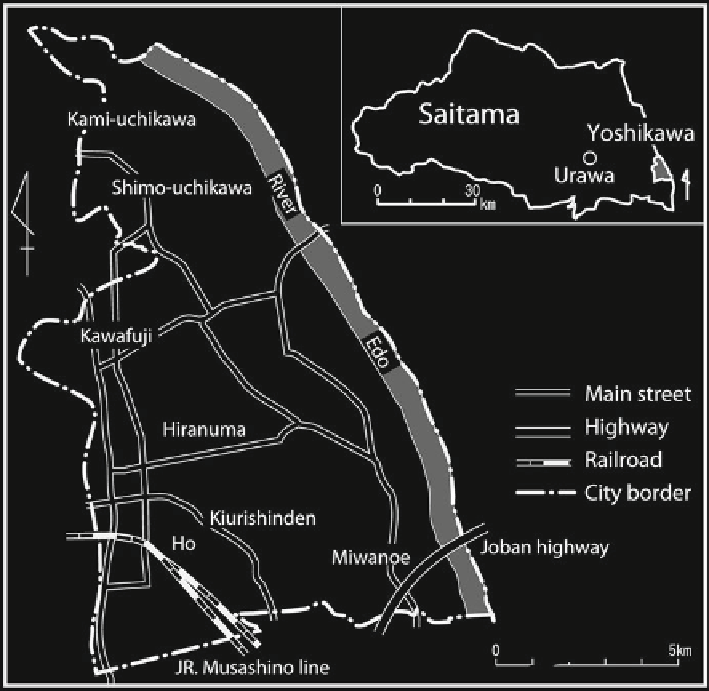Geography Reference
In-Depth Information
Fig. 3.35
General view of Yoshikawa City, Saitama prefecture, 1996
The Kiurishinden area is a good example of the religious forms in this region.
Kiurishinden was developed at the end of the seventeenth century, and con-
tained 21 households in the early eighteenth century and 26 by 1876. The
Kanamura
association seems to have been organized before 1860, but the rea-
son for its founding is uncertain.
Kanamura
was worshipped as a
kami
of agri-
culture and four people took turns to visit the shrine for the spring and autumn
festivals. Four managers inherited their positions from their fathers. Before the
Second World War, each visit took a day. Delegated visitors stayed at a shrine
town. After prayer, the delegates received amulets for household altars and for
preventing insect damage. The amulets were placed at the entrance of rice seed-
ling beds to pray for safety. The visitors used to receive a bottle of water in case
of dry weather.
Musubi-ko
was held before the visits departure and lots were drawn to pick
the delegates. On return, a
kanjo
-
ko
was held and all the events were completed.
Since 1995, the Kiurishinden visiting system has changed; for example,

Search WWH ::

Custom Search